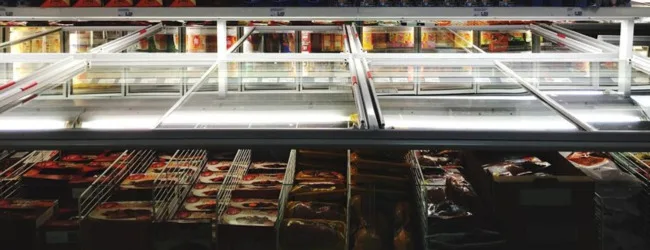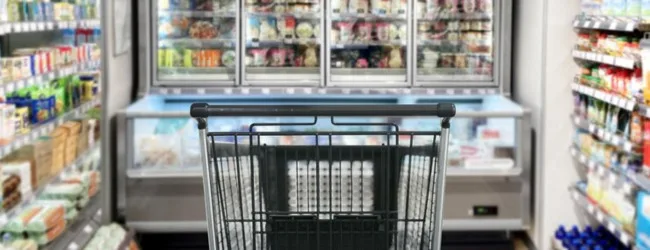Table of contents
- What is Cold Storage?
- Why is Cold Storage Important in India?
- Types of Cold Storage Facilities in India
- Benefits of Cold Storage Facilities
- Government Subsidies for Cold Storage in India
- Eligibility Criteria for Cold Storage Subsidies
- How to Apply for Cold Storage Subsidies
- Challenges in Cold Storage Infrastructure
- Conclusion
- Frequently Asked Questions (FAQ)
India is an agricultural powerhouse, contributing significantly to global food production. However, a major challenge for Indian farmers and businesses is the lack of adequate cold storage facilities. This often leads to food wastage, reduced profits, and market inefficiencies. In this blog, we will explore the concept of cold storage in India, its benefits, government subsidies, and eligibility criteria. Let’s dive in!
WATCH | Cold Storage In India | Benefits of Cold Storage | Subsidy and Eligibility
What is Cold Storage?
Cold storage refers to refrigerated facilities used to store perishable goods such as fruits, vegetables, dairy products, meat, and seafood. These facilities maintain specific temperature and humidity levels to preserve the freshness and quality of these items over extended periods. Cold storage helps reduce spoilage and ensures that products reach consumers in prime condition.
Why is Cold Storage Important in India?
India is the second-largest producer of fruits and vegetables in the world. Despite this, a significant portion of these perishables is lost due to inadequate storage infrastructure. Here’s why cold storage is critical:
- Reduces Wastage: Prevents spoilage of perishable goods.
- Increases Shelf Life: Allows farmers to store products longer and sell them when prices are favourable.
- Boosts Export Potential: Enables quality preservation for international markets.
- Supports Food Security: Minimises post-harvest losses and ensures consistent food supply.
Types of Cold Storage Facilities in India
There are different types of cold storage facilities designed to meet various needs:
- Bulk Cold Stores: For large-scale storage of perishable goods like potatoes and onions.
- Multipurpose Cold Stores: Can store different products with varying temperature requirements.
- Frozen Food Storage: For items like meat, seafood, and frozen vegetables.
- Controlled Atmosphere (CA) Storage: Regulates oxygen and carbon dioxide levels for fruits like apples.
- Pre-Cooling Units: Rapidly cool freshly harvested produce to maintain freshness.
Benefits of Cold Storage Facilities

Investing in cold storage offers multiple benefits for farmers, wholesalers, and consumers. Let’s break them down:
1. Reduced Post-Harvest Losses
- Cold storage helps reduce spoilage by maintaining optimal conditions.
- Ensures farmers do not suffer financial losses due to wasted produce.
2. Better Price Realisation
- Farmers can store their produce and sell it when market prices are higher.
- Avoids the need for distress sales immediately after harvest.
3. Increased Export Opportunities
- Quality preservation makes Indian produce competitive in global markets.
- Helps meet international quality and safety standards.
4. Year-Round Availability
- Ensures seasonal fruits and vegetables are available throughout the year.
- Stabilises supply, leading to more consistent prices.
5. Enhanced Food Safety
- Maintains hygiene and reduces the risk of contamination.
- Important for items like dairy, meat, and seafood.
6. Supports Agricultural Diversification
- Encourages farmers to grow high-value crops, knowing they can be stored safely.
- Reduces reliance on a single type of produce.
💡 Pro Tip: If you want to start a business but have too many doubts, connect with a business expert from Boss Wallah for guidance – https://bw1.in/1116
Government Subsidies for Cold Storage in India

To encourage investment in cold storage facilities, the Indian government offers various subsidies and incentives. These initiatives aim to boost infrastructure, reduce food wastage, and support farmers. Key subsidy schemes include:
1. NABARD Subsidy for Cold Storage
- Scheme Name: Agricultural Marketing Infrastructure (AMI) scheme.
- Subsidy: Up to 25% to 33% of the project cost, depending on category and location.
2. National Horticulture Board (NHB) Subsidy
- Eligibility: For horticulture-related cold storage projects.
- Subsidy: 35% to 50% of the total project cost, capped at specific amounts.
3. Pradhan Mantri Kisan SAMPADA Yojana
- Objective: Modernize food processing and reduce post-harvest losses.
- Subsidy: Financial assistance for cold chain infrastructure, including storage units and transportation.
4. State Government Subsidies
- Many states offer additional subsidies and incentives for setting up cold storage facilities.
- Check with your state’s agricultural or horticultural department for specific details.
Eligibility Criteria for Cold Storage Subsidies
To qualify for cold storage subsidies, applicants must meet certain criteria. These typically include:
- Who Can Apply: Farmers, farmer-producer organisations (FPOs), entrepreneurs, cooperatives, and private companies.
- Project Viability: A detailed project report (DPR) outlining the feasibility and economic viability.
- Land Ownership: Proof of land ownership or lease agreement for the project site.
- Compliance: The project must meet technical standards specified by the government.
- Financial Contribution: Beneficiaries must contribute a portion of the total project cost.
How to Apply for Cold Storage Subsidies

Follow these steps to apply for a cold storage subsidy:
- Prepare a Detailed Project Report (DPR): Include cost estimates, technical specifications, and financial projections.
- Submit Application: Apply through the respective government department or online portals like NABARD or NHB.
- Evaluation: The application will be reviewed for technical and financial feasibility.
- Approval: If approved, the subsidy will be sanctioned.
- Implementation: Complete the project as per the approved plan.
- Disbursement: Subsidy funds are released after verification of project completion.
Challenges in Cold Storage Infrastructure
Despite the benefits and subsidies, cold storage in India faces several challenges:
- High Initial Investment: The cost of setting up a cold storage unit can be prohibitive.
- Energy Costs: Maintaining cold storage requires significant electricity, which is often expensive in rural areas.
- Lack of Awareness: Many farmers are unaware of cold storage benefits and subsidy schemes.
- Inadequate Infrastructure: Poor road connectivity and transportation issues can hinder cold storage efficiency.
Need Expert Guidance?
Starting a business can be challenging, but you don’t have to do it alone! At Boss Wallah, our 2,000+ business experts are ready to provide valuable insights and guidance. Whether you need help with marketing, finance, sourcing, or any other area of any business, our business experts are here to help you succeed- https://bw1.in/1116
Confused about Which Business to Start?
Want to start your own business but unsure which one to choose? Explore Boss Wallah, where you’ll find 500+ courses by successful business owners, featuring practical, step-by-step guides on starting and growing various businesses.
Find your perfect business idea today – https://bw1.in/1111
Conclusion
Cold storage facilities are crucial for reducing food wastage, increasing farmer profits, and improving food security in India. With government subsidies and incentives available, setting up cold storage is now more accessible than ever. By understanding the benefits, types, and eligibility for subsidies, farmers and entrepreneurs can take advantage of this infrastructure to grow their businesses and support the agricultural economy.
Frequently Asked Questions (FAQ)
1. What is cold storage and why is it important in India?
Cold storage refers to refrigerated facilities designed to store perishable goods like fruits, vegetables, dairy, meat, and seafood at specific temperature and humidity levels. It is crucial in India, an agricultural powerhouse, to minimise significant post-harvest losses, preserve produce quality, and ensure year-round availability to consumers.
2. What are the key benefits of investing in cold storage facilities?
Investing in cold storage offers multiple benefits, including reduced post-harvest losses by preventing spoilage, better price realisation for farmers by allowing them to sell when market prices are favourable, increased export opportunities due to preserved quality, enhanced food safety, and support for agricultural diversification.
3. What types of government subsidies are available for setting up cold storage in India?
The Indian government offers various subsidies and incentives to promote cold storage infrastructure. Key schemes mentioned include the NABARD Subsidy under the Agricultural Marketing Infrastructure (AMI) scheme, subsidies from the National Horticulture Board (NHB) for horticulture-related projects, financial assistance under the Pradhan Mantri Kisan SAMPADA Yojana, and additional schemes offered by individual State Governments.
4. Who is eligible to apply for these cold storage subsidies?
Eligibility criteria can vary depending on the specific scheme. However, generally, farmers, Farmer Producer Organizations (FPOs), cooperatives, entrepreneurs, and food processors are eligible to apply for cold storage subsidies. The blog post mentions that eligibility might depend on factors like the category of the applicant and the project’s location.
5. How much subsidy can I expect to receive for a cold storage project?
The subsidy amount varies depending on the scheme, the project cost, and the category of the applicant. The blog post mentions subsidies ranging from 25% to 33% of the project cost under NABARD’s AMI scheme and 35% to 50% of the total project cost (capped at specific amounts) under NHB subsidies. State government subsidies can offer additional support.
6. What is the general process for applying for cold storage subsidies?
While the specific process might differ slightly between schemes, the general steps involve preparing a Detailed Project Report (DPR) outlining cost estimates, technical specifications, and financial projections. This DPR is then submitted through the respective government department or online portals like those of NABARD or NHB. The application then undergoes an evaluation process for technical and financial feasibility.
7. What kind of information should be included in the Detailed Project Report (DPR)?
A comprehensive DPR is crucial for the application. Based on the blog post, it should include detailed cost estimates for the project, technical specifications of the cold storage facility and equipment, and financial projections demonstrating the viability of the project.
8. Besides central government schemes, are there other sources of support for cold storage?
Yes, in addition to the central government schemes like those by NABARD, NHB, and PM Kisan SAMPADA Yojana, many State Governments in India also offer their own subsidies and incentives for setting up cold storage facilities. It is advisable to check with the respective state’s agricultural or horticultural department for specific details on their programs.



